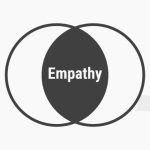Now, we have learnt the problems of our customers and the context as well. It is time to define our problem and arrive at a problem statement. This statement will give us the necessary direction to proceed towards the issue faced by the customer.
As a design thinker, we need to cover all the points and the answers that we got in the ‘empathize’ phase. This is where the process of synthesis comes into picture. We have to club all the answers together and convert them into a coherent single statement.
The first step towards defining a problem is to find who the user is, what is his/her/their needs and then develop insights from the answers. Think of ‘How might we?’ questions. For example, ‘how might we motivate the employees in DT?’, ‘How might we address the concern on the connection between appraisal ratings and attrition?’, ‘How might we reduce the cost of knowledge transfer program without compromising its quality and the mandatory pre-requisite resources?’ and many other questions along the similar lines.
But how do we generate such questions. In short, “How might we generate the ‘how might we’ questions?” The following guidelines will help a design thinker to come up with such questions.
● Amplify the good − A design thinker must think how to amplify the positive aspects of the customers’ needs. For instance, we can think of how to boost the morale of the employees who are not leaving the company or how to increase the quality of knowledge transfer program in DT.
● Eliminate the bad − Design thinkers need to remove all the bad elements observed in the problem. In case of DT problem, we have to remove the problem of high costs of knowledge transfer and the lack of motivation in the company. We also need to remove the negative effect that appraisal ratings have on employees.
● Explore the opposite − Design thinkers need to brainstorm on how to convert the problem into an opportunity. In the case of DT, we can think of how the lack of motivation can become an opportunity for employees to ideate and suggest a way to bring more motivation and energy in the workplace.
● Question the Assumptions − This step involves questioning the assumption at hand. It is assumed that DT needs knowledge transfer for its new employees. Is it really indispensable to have this knowledge transfer process in place?
● Identify the Unexpected Resources − Design thinkers should try to find whether some other resources not mentioned by the customer can be leveraged? In case of DT, think of how we can use some other resources to train the employees or to motivate the employees in the organization.
● Create an Analogy − Design thinking also involves, among many other things, how to create connections between the problem at hand and unrelated images. DT can think of similar cases or situations where such problem of knowledge transfer and motivation of people is at stake. DT can think how problems had been solved there.
● Break the Problem into Pieces − This is where again analysis comes into picture for a short while before the problem definition can be synthesized. The points discussed from ‘empathize’ section can be broken down into elementary fragments to make the work easier.
Working over each aspect, we come across the following problem statement – “How should DT motivate its existing employees along with training its new human resources effectively at low cost?”
You can create your own problem statement as well, which may be even better than the one above.



Comments are closed